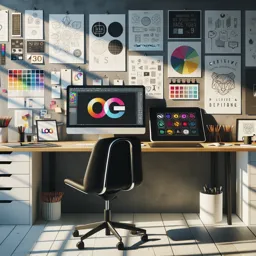Typography is more than just arranging type on a page; it is a fundamental element of design that shapes how we perceive and communicate text. Throughout history, typography has evolved alongside technology, playing a pivotal role in both artistic expression and the dissemination of information.
The Origins of Typography
The birth of modern typography can be traced back to the mid-15th century with Johannes Gutenberg’s invention of the movable type printing press. This innovation revolutionized how information was published and shared, making books and printed materials more accessible and affordable. Early typefaces, such as blackletter, were designed to mimic the manuscripts of scribes, but as technology developed, new styles emerged to enhance readability and aesthetics.
The Rise of Typefaces
As printing techniques advanced, typographers created a diverse array of typefaces. Serif typefaces, such as Garamond and Baskerville, brought elegance and clarity to the printed page. The 19th and 20th centuries saw the emergence of sans-serif fonts like Helvetica and Futura, reflecting modern tastes and functional design principles. Each period in history left its mark on typography, influencing the way designers approach text today.
Typography in the Digital Age
The transition to digital technology transformed the possibilities for typographic design. Desktop publishing software and web design tools have democratized typography, allowing designers to experiment with letterforms, spacing, and layout. Custom and variable fonts offer unprecedented flexibility, enabling typographers to create dynamic, responsive designs that adapt to different screens and devices.
Impact on Modern Graphic Design
In contemporary graphic design, effective typography communicates brand identity, guides the viewer’s attention, and enhances the overall user experience. Designers thoughtfully select typefaces, consider kerning and leading, and play with hierarchy to convey messages with clarity and style. Whether used in print, on websites, or in mobile apps, typography remains a crucial tool for visual storytelling.
Conclusion
The evolution of typography reflects broader trends in art, technology, and culture. By understanding its history and embracing new tools, designers can craft compelling, readable, and memorable work that resonates with audiences well into the future.

































